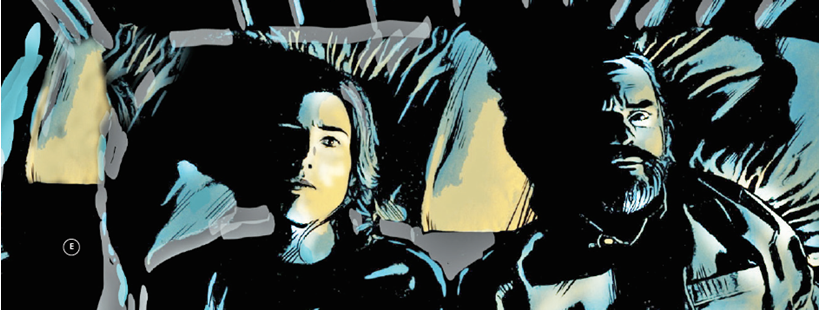by Corey Kaplan, Perspective
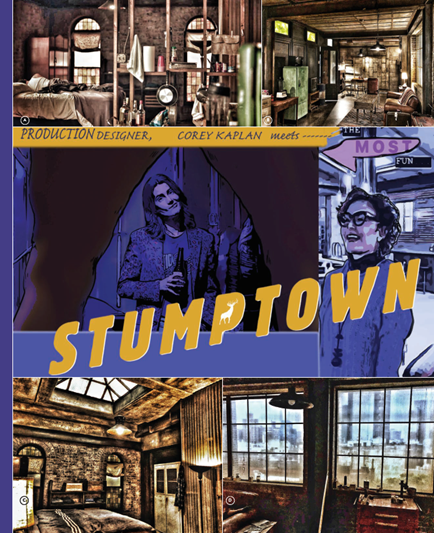
Hello from Stumptown!
Even though the fictional world of Stumptown is lifted from the pages of the graphic novel of the same name, in the Production Design world it is necessary that it have structural sustainability where the characters from these pages can come to life and interact. Jason Richman, Stumptown’s executive producer and show runner, provided clear notes on what should be designed for the stories of the first season. Greg Rucka, the creator of the graphic novel Stumptown (with illustrators Matthew Southworth and Justin Greenwood) has said he learned that a TV series and the graphic novels that inspired them are completely different things. Rucka says that one of the joys of television is that it allows the actors to give the viewers a better sense of the internal lives of their characters in ways a comic or graphic doesn’t always have room for on the printed page.
This is where my job as a Production Designer comes in, to work in conjunction and in unison with the writers, producers, cinematographers, actors, hair, makeup, construction, painters, greens keepers and many more to bring a script to life, in this case from a graphic novel, on the screen. I like to envision the life of whatever production I am brought into over several seasons. What elements would be utilized to tell the stories and be built on and enhanced over several seasons? In the case of Stumptown, there are five central characters in three interlocking areas of the city of Portland, Oregon. The personalities of each of these characters is reflected into the environment where they live and work. The Art Department needed to understand the characters in the comic books, the elements of their character lives, to build and decorate for them in an exaggerated glory that brings them to life.
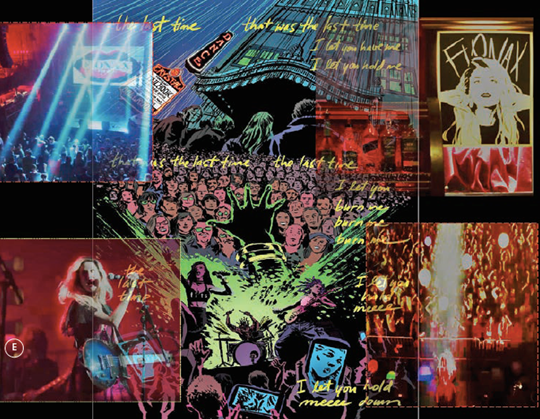
The lead character in Stumptown is Dex Parios (wonderfully portrayed by Cobie Smulders), an Iraq war vet who has come home with PTSD and a need for direction in her life. She arrives in Portland, to her childhood home, finding her parents have abandoned her younger autistic brother. So while not only dealing with her own foibles, she now must be his guardian and deal with his issues as well. The craftsman home decor reflects her parents’ taste and contrasts with her sensibility. In a comedic way, Dex looks out of place in her own home.
I grew up inspired by episodic TV shows and the strength of the women investigators of the ’60s and ’70s. There was Emma Peel (Diana Rigg) of The Avengers and Agent 99 (Barbara Feldon) from Get Smart. Both of these series were designed using truly vibrant 1960s pop art styles while flashing the miniskirt. I was smart enough to love the look but young and unable to recognize the complacent representation of the women in these series. Dex is a fighter and a survivor and reminds me of actress Jane Fonda from her film Coming Home. Dex doesn’t take any shit, wears funky T-shirts, can kick ass and she likes old cars. Dex is my kind of girl!
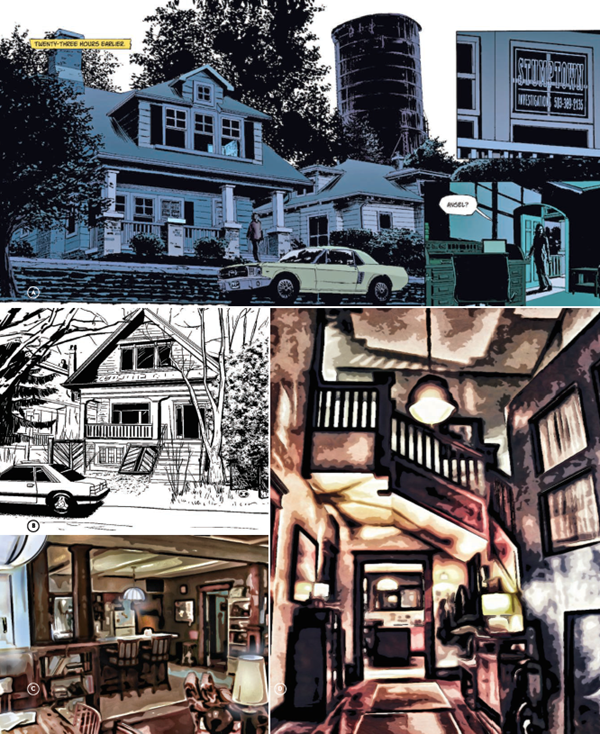
From her past, she reunites with another powerful independent woman named Sue Lynn Blackbird, played by the acclaimed actress from Dances With Wolves, a member of The Order of Canada and a Native American activist, Tantoo Cardinal. Blackbird has been an important element in Dex’s life. Their connection gives Dex a role model to which she can aspire. Blackbird runs the local Native American casino and has the command of both women and men that truly respect her. The visual element of her office and establishment reflect many aspects of her strong-willed personality and Native American lifestyle.
Then there is Dex’s new friend and confident Grey McConnell (played by Jake Johnson from The Good Girl) who has had a checkered past but, like Dex, is a survivor too. They are both searching for meaning and a place to call home, and their bonding and lives cross in the bar that Grey has created named the Bad Alibi. It is here where Dex, Hoffman, Dex’s brother Ansel and Grey (along with some other assorted characters), come together to commune, sort through their issues and forge new adventures together.
In developing the look for the set of the Bad Alibi, the Art Department needed to understand and to reflect elements of Grey’s character. Grey has had a shady past. This bar is his first physical sense of permanence. In our meetings with show creator Jason Richman, we learned where he believed the location of the Bad Alibi should be in downtown Portland, and to design with that in mind. But we also needed to locate an exterior location in Los Angeles that would match the Bad Alibi’s interior, and the interior really needed to reflect Grey with his love of building cars, old factories, unusual mechanical decorations and his truly bachelor life living upstairs above the bar’s main area.

Finding an exterior to match the characteristics of the urban Portland area while shooting the series in Los Angeles lead to the Nate Starkman building. Its appearence best matched the Portland warehouse district. The inspiration for the interior came from another Los Angeles building called the Acme Rag Company. This brick-and-mortar structure has large windows and doors, an upper walkway, a burlap storage loft, multiple skylights and extra-large industrial washing machines. It was agreed that the Starkman building would become the exterior of Grey’s Bad Alibi bar and the Acme Rag Company would be the inspiration for its interior. The inspiration of both of these structures became the sum total of how the Bad Alibi bar should be represented and the reflection of Grey’s personality. This now became a job for all of the creative departments to work on in unison, marrying all of the personality traits of Grey lifted from the pages of the script and the graphic novel to build a home where a number of the pivotal scenes would come to life.

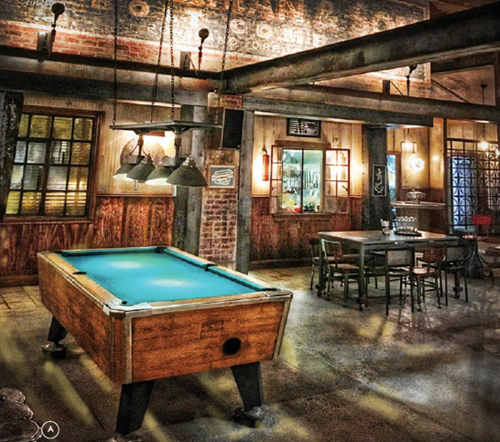
In developing, designing and executing the visual elements of a series like Stumptown, I gather as many elements of the characters and their interactions with the others that populate their world as possible. By doing this, we as a team add the needed elements to enhance the characters’ world and the subtle nuances of those that surround them in each scene. Where is Grey’s office? Where does the deliveryman execute his duties? Is there a restaurant? What type of lighting fixtures? How is the liquor displayed? What does the seating look like? All of these questions and more are gathered up in the mixing bowl and we as a team execute the design and construction to best appear seamless within their world.
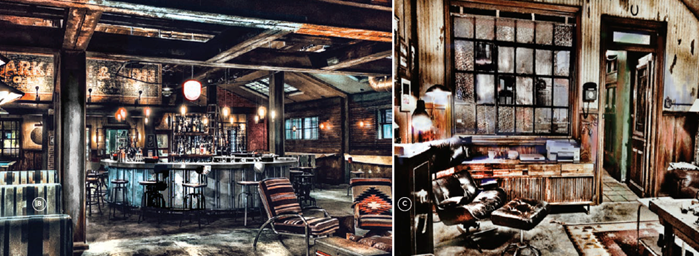
Stumptown is not the first graphic novel that has been brought to life for the small screen. Back in 1999, the creative genius Chris Carter (creator of The X-Files and Millennium) developed a short-lived series called Harsh Realm, based on the comic book stories created by James D. Hudnall and Andrew Paquette. In this series, the US military have developed a virtual reality game to replicate real-world disaster scenarios for training simulations. The lead character, Tom Hobbes, is sent inside the game with one mission: to kill a rogue US Army sergeant major who has taken control of the training simulator. It was one of the first series that explored the bending of reality into simulated reality. While this is a type of series that as a Production Designer is highly attractive to conceive and execute, I was at the time honored to be working with Chris Carter on the Los Angeles seasons (six through nine) of The X-Files.
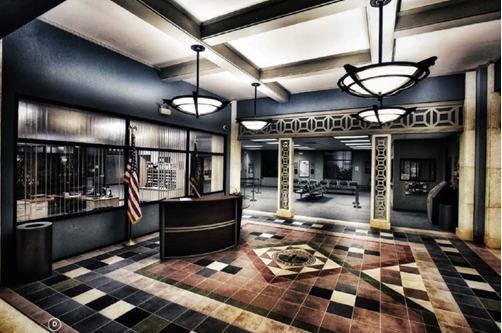
I have been over the years very fortunate to work on multiple multi-season TV shows. In a number of these shows, I have been asked by the directors, “How can this be shot differently?” “Is there a better angle to shoot this?” “Which walls wild?” “How do we best serve the scene and move the story along?” It is here on a series with typically a different director for each episode where we as a creative Art Department need to be nimble enough but retain the creative look of the show to serve each character and also fulfill the director’s vision in telling each episode’s story. I believe with Stumptown, we have been able to envision the graphic novel world into reality for all to watch. Stay tuned for season two.
